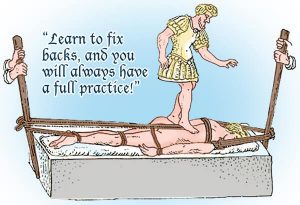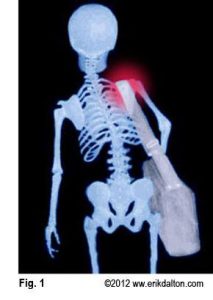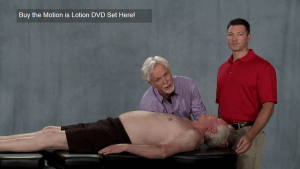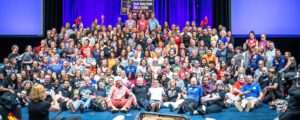This 2020 article authored by Howard J Luks, MD, emphasizes the importance of maintaining muscle mass. I’ve written about how the body’s “Spring Systems” are affected by the loss of muscle mass and coordination. I especially see it in amateur and professional golfers.
See: https://erikdalton.com/blog/massage-movement-therapy-golf-injuries/

Muscle Mass, Strength, and Longevity
“When optimizing our health and longevity, prioritizing muscle mass and muscle strength are critically important considerations. The changes that occur to our muscles as we age are profound. These changes, as we will discuss, can have dramatic effects on our health. Muscle mass starts to diminish as early as our 40’s. That’s not old! Muscle mass loss and decreases in muscle strength ramp up dramatically as we enter our 60’s. If we do not optimize our muscle strength and muscle mass when we are younger, then the risks of muscle loss multiply and are harder to overcome as we age. This post is going to cover how muscle mass affects our overall health, why we lose muscle as we age, and how we can fight back against these changes.”
Sarcopenia should be a four-letter word
Sarcopenia is a fancy word for age-related loss of muscle mass. Sarcopenia, or the decline of skeletal muscle tissue with age, is one of the most important causes of functional decline and loss of independence in older adults. Sarcopenia starts to appear in our 40s!!! Loss of muscle mass is predictive of a shorter lifespan, and worse recovery after injury or surgery. The causes of sarcopenia are debated, but it appears to be multifactorial, with neurological decline, hormonal changes, chronic inflammation, sedentary behavior, chronic illness, and poor nutrition, all looking to be related and contributing to the decline.
Our muscle tissue accounts for more than 50% of our body mass. Our muscles are essential from a metabolic perspective. Loss of a highly metabolically active tissue can have dramatic consequences for adults. Muscles help us control our glucose levels, use glucose as fuel, and have a role in insulin resistance and type 2 diabetes. Loss of muscle mass contributes to poor health outcomes, fatigue, loss of function, disability, fall risk, frailty, and death.
I hope I have convinced you that maintaining or building muscle mass is essential. Let’s dive deeper.
Muscle Synthesis and Muscle Breakdown
Muscle mass and protein synthesis are in a constant state of flux. Our body is continually breaking down muscle protein (MPB), and rebuilding or synthesizing muscle protein (MPS). When MPB exceeds MPS, we start to lose muscle mass. This occurs on a micro-level (daily shifts) and a macro level (long term shifts). Every night, our MPB exceeds our MPS. That’s how rapidly this system changes. Achieving a situation where muscle protein synthesis exceeds muscle protein breakdown is essential to combat the changes that occur with aging and inactivity.
Resistance exercise is critical too. You need to challenge your muscles if you expect to keep them. Muscles will respond to load or force regardless of your age. Yes, a 20-year-old can build bigger and stronger muscles than an 80-year-old. But an 80-year-old will grow larger muscles if they perform resistance exercise. You cannot assume that supplements work alone without proper nutrition and exercise.
Muscle mass is associated with longevity
Muscle and fat are two highly metabolic tissues. How our tissues interact with our metabolic machinery matters. Visceral or belly fat is very toxic to us, and we should seek to minimize the amount that we have. Visceral fat is responsible for considerable chronic disease states such as type 2 diabetes, heart disease, and fatty liver (NAFLD). Muscles, on the other hand, improve our ability to manage glucose, dispose of glucose and muscles have a role in mediating the severity of insulin resistance. Exercise is prescribed to people with insulin resistance or type 2 diabetes to improve glucose control and their overall metabolic dysregulation.
Fall risk, frailty, and demise: the role of muscle mass
The basic pillars of an exercise program include aerobic conditioning, resistance exercise, high-intensity exercise, and balance training. Yes, balance training. While chronic disease sets the stage for our decline as we age, what ultimately leads to frailty and our demise is the risk of falling, and the injuries sustained from falling. Weakness and loss of balance increase our risk of falling. Each fall becomes progressively harder to recover from. Eventually, you might fracture your wrist, shoulder, or hip. Sadly, 50% of you might die within a year of suffering a hip fracture.
How to improve our muscle mass
There is no easy answer here. Preventing the age-related loss of muscle mass will require effort. We need to push and pull heavy things. Recent research has shown that one bout of resistance exercise leads to muscle growth in 90-year-olds. So, it’s never too late to initiate a resistance exercise program. I often hear that folks are afraid of hurting their back, or something else from exercise. Well, we know that exercise does not worsen osteoarthritis. We know that everyone will experience back pain or shoulder pain, etc. throughout their lives. But the risk of not performing exercise outweighs the risks of performing exercise under proper guidance.
To initiate a resistance exercise program, you need some guidance. Which muscles should you exercise? That depends on what you are prioritizing. For longevity and fall risk, you want to be exercising your legs, thighs, calf, and glutes. Those are our largest muscles and will have the most significant impact on our metabolism. Those are also the muscle groups that will minimize our risk of falling.
For younger folks, I know working out legs is annoying for many. Try to embrace it. Squats, hip hinge exercises, and calf raises should be part of your routine. Runners, you must concentrate on calf exercises. Both seated and straight leg calf raises so you hit both your gastrocnemius and soleus muscles. Our calf muscles are one of the first to succumb to the changes brought by sarcopenia. It is essential to focus on them during our resistance exercise training.
I often hear from patients in the office that they are afraid to exercise. They are so scared of hurting themselves. That is a reasonable fear. Injuries might happen if you perform resistance exercise. But you should fear the effects of sarcopenia more. You should fear the onset of frailty more. There is nothing worse than seeing someone inch along with a cane because they have lost their balance and strength. Their risk of decline and demise is far higher than your risk of injury.
On sale this week only!
Save 25% off the "Dalton Technique Treasures" eCourse
The “Dalton Technique Treasures” eLearning course is a compilation of some of Erik’s favorite Myoskeletal Alignment Techniques (MAT). Learn MAT techniques to assess and address specific sports injuries, structural misalignment, nervous system overload, and overuse conditions. ON SALE UNTIL July 29th! Get Lifetime Access: As in all our eLearning courses, you get easy access to the course online and there is no expiry date.








